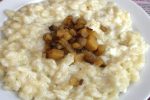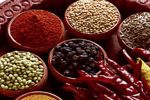African Food Facts

Traditionally, the various cuisines from the countries of Africa (and its islands) have been identified as a combination of locally available fruits, cereal grains and vegetables, as well as milk and meat products. In some parts of the continent, the traditional diet features a preference of milk, curd and whey products. Because Africa’s nations are so vast and wide and the climate so interchangeable there are several significant differences in the eating and drinking habits. Generally vast differences are recorded via the regions of Africa which are divided into sectors/areas from which most sectors derive similarities, these sectors include for example the North African nations. The regional areas and populations as oppose to individual countries are divided as mentioned into the following regions; Central Africa, East Africa, the Horn of Africa, North Africa, Southern Africa and West Africa, possesses their own distinctive dishes, preparation and techniques.
A much maligned area many fantastic discoveries are still being documented. Including the sub areas and states within such countries as Somalia and Ethiopia, the main traditional dishes in Ethiopian cuisine and Eritrean cuisine are tsebhis (stews) served with injera (flatbread made from teff, wheat, or sorghum), and hilbet (paste made from legumes, mainly lentil, faba beans). Eritrean and Ethiopian cuisine (especially in the northern half) are very similar, given the shared history of the two countries. Eritrean and Ethiopian food habits vary regionally. In the highlands, injera is the staple diet and is eaten daily among the Tigrinya. Injera is made out of a variation and/or blend of: teff, wheat, barley, sorghum and corn and resembles a spongy, slightly sour pancake. In these tribal lands when families eat, they generally share food from a large tray placed in the centre of a low dining table.




